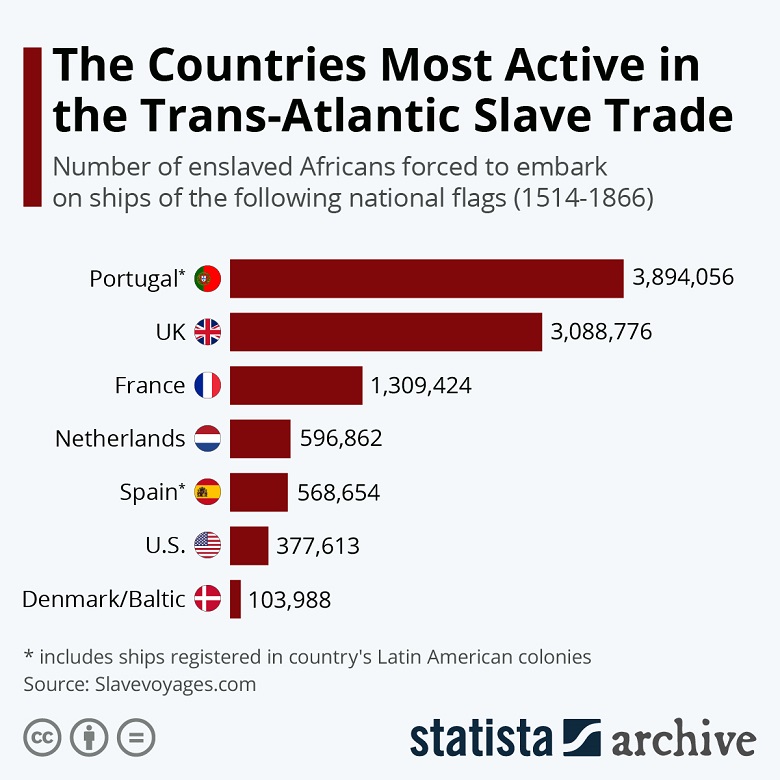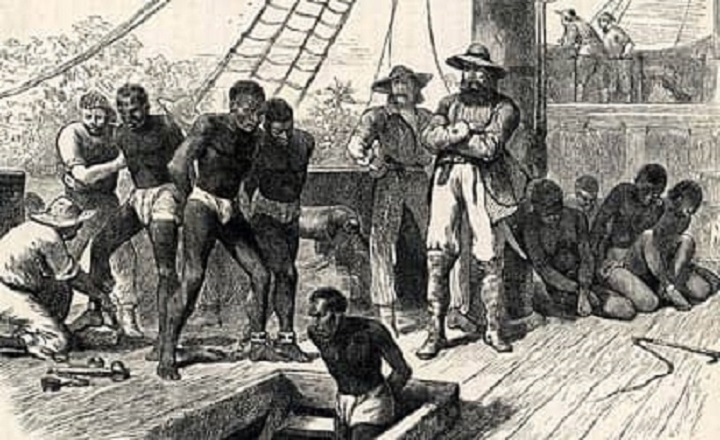African slavery started many centuries, accusing fingers pointing to Arabians. Some people have little interest in the Arab slave trade, but the most famous is the so-called Transatlantic slave trade.
The transatlantic slave trade in modern times is part of Africa, Europe, and the Americas. It lasted more than four centuries and cost Africa, according to various estimates, the loss of from fifty to one hundred million people.
The chronicle of the Transatlantic slave trade usually divides into three periods.

XVI century – mid-17th century
It divides into two sub-periods: before and after 1510, when the export of slaves to the New World began. During this period, slaves from Africa export every year. More and more, but on the whole, still not very much, and almost exclusively from the coast of West Africa.
Mid-17th century – 1807/08
This is the period of the so-called “free,” i.e., unlimited slave trade when large companies and individual merchants sent their ships to Africa for slaves.
Formally, it lasted until the slave trade was banned in England and the United States, the most considerable slave-trading powers at the time. But in fact, it ended earlier, with the Great French Revolution.
Her humanistic ideas and the abolitionist movement in England and America played a role. However, the ban on the slave trade in England and the United States did not come about solely from humanistic considerations. The development of capitalism, in particular the industrial revolution, brought to the fore another African commodity: palm oil, which is necessary for the lubrication of numerous mechanisms, other raw materials.
The period from 1807/08 – until 1890
The period of the smuggling slave trade. It ended mainly in 1890 when a general action against the slave trade adopt at the international Brussels conference. By this time, the victory of the northerners in the Civil War in the United States had nullified the largest hotbed of slave labor in the New World. In Africa itself, colonial conquests made it difficult to export slaves, and they went mainly under the flag of the fight against the slave trade.
